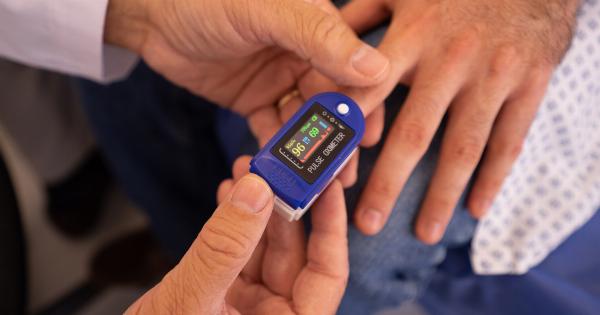Our legs carry us through life, supporting our weight and helping us move. While it is easy to take them for granted, our legs can also reveal signs of serious underlying health issues.
Recognizing these signs and seeking medical attention promptly can make a significant difference in preventing further complications and improving overall well-being. In this article, we will explore ten potential health issues that can manifest in the legs and the signs to watch out for.
1. Deep Vein Thrombosis (DVT)
Deep vein thrombosis occurs when a blood clot forms in a deep vein, typically in the legs. Common symptoms of DVT include:.
- Swelling in the affected leg
- Pain or tenderness
- Warmth and redness over the affected area
- Visible veins
If you experience these symptoms, prompt medical attention is crucial to prevent the clot from traveling to your lungs, causing a pulmonary embolism.
2. Peripheral Artery Disease (PAD)
Peripheral artery disease is characterized by the narrowing of arteries that supply blood to the legs. Signs of PAD include:.
- Claudication: leg pain or cramping during physical activity
- Leg numbness or weakness
- Coldness or change in skin color
- Poor hair growth on the legs
PAD raises the risk of heart attack and stroke, so seeking treatment is essential to manage the condition and prevent complications.
3. Varicose Veins
Varicose veins are enlarged, swollen, and twisted veins that typically occur in the legs. Common signs of varicose veins include:.
- Visible, bulging veins
- Aching or discomfort in the legs
- Swelling around the affected area
- Throbbing or cramping
While varicose veins are often harmless, they can cause discomfort and lead to complications, such as ulcers or blood clots.
4. Chronic Venous Insufficiency (CVI)
Chronic venous insufficiency occurs when the valves in the leg veins stop working correctly, leading to poor blood flow back to the heart. Signs of CVI include:.
- Leg pain or aching
- Swelling in the legs or ankles
- Cramping, heaviness, or throbbing sensation
- Skin changes, such as discoloration or ulcers
If left untreated, CVI can cause significant discomfort and complications, including leg ulcers and infections.
5. Lymphedema
Lymphedema is a condition characterized by swelling due to a buildup of lymphatic fluid in the tissues. Signs of lymphedema may include:.
- Swelling in the legs, feet, or ankles
- Feeling of heaviness or tightness
- Decreased flexibility in the affected limb
- Recurring infections in the affected area
Lymphedema can be caused by various factors, including surgery, radiation therapy, or certain medical conditions. Proper management is essential to reduce swelling and prevent complications.
6. Cellulitis
Cellulitis is a bacterial skin infection that can affect the legs. Signs of cellulitis include:.
- Redness and swelling
- Warmth and tenderness
- Pain or soreness
- Skin tightness or shiny appearance
Cellulitis requires immediate medical attention, as it can lead to severe complications if left untreated.
7. Osteoarthritis
Osteoarthritis is a degenerative joint disease that can affect the knees, causing significant pain and mobility issues. Signs of knee osteoarthritis include:.
- Pain or stiffness in the knee joint
- Swelling or tenderness
- Decreased range of motion
- A grating sensation with movement
Early intervention and appropriate treatment can help alleviate symptoms and slow the progression of osteoarthritis.
8. Deep Vein Thrombosis (DVT)
Referred rather to Section 1 for information about Deep Vein Thrombosis.
9. Peripheral Artery Disease (PAD)
Referred rather to Section 2 for information about Peripheral Artery Disease.
10. Varicose Veins
Referred rather to Section 3 for information about Varicose Veins.































